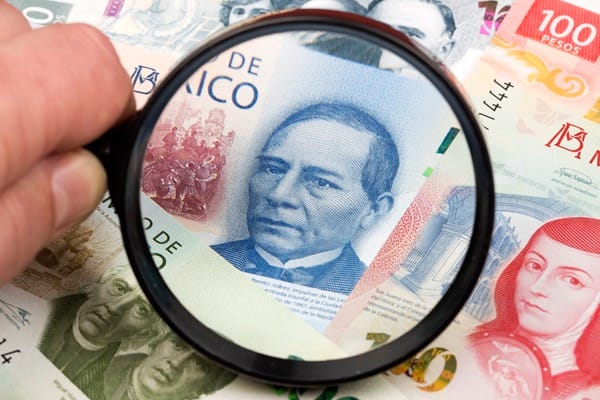We are on the verge of crucial monetary policy decisions by both the Federal Reserve of the United States and the Bank of Mexico.
Ahead of these highly significant monetary policy events, the Mexican peso is one of the instruments under the spotlight.
During this pivotal week, the Mexican currency has demonstrated remarkable stability against the US dollar, even appreciating slightly by 0.3%.
This behavior reflects investor caution, as they anticipate interest rate moves but prefer to avoid large bets until the monetary authorities’ final direction becomes clear.
The market has already largely priced in a 25-basis-point rate cut by the Fed. The real focus will be on the economic projections for 2025, which will provide a clearer picture of the medium-term interest rate trajectory and what will truly move the market.
In this context, a “hawkish” or less accommodative tone from the Fed could strengthen the dollar and exert downward pressure on the peso. Conversely, a more “dovish” tone might be interpreted as a sign that the Fed will continue its normalization process significantly, offering relief to emerging market currencies, including the Mexican peso.
We cannot ignore the impact of the Fed’s monetary policy on our currency. Any change in expectations regarding US rate futures directly affects capital flows to and from Mexico.
Domestically, the Mexican economy has shown positive signs that currently support the peso. Aggregate demand in the third quarter surprised to the upside with growth of 1.2%, far exceeding the expected 0.4%. Additionally, private spending increased by 1.1%, surpassing the forecast of 0.6%. These figures reflect an economy that, despite global challenges, still maintains a relative internal dynamism.
However, the peso’s outlook is not without risks. It is anticipated that Banxico will cut the interest rate by 25 basis points on Thursday. This decision, while justified by lower inflationary pressures and the need to stimulate economic growth, could create a pressure scenario for the peso.
A Banxico rate cut is almost certain. The question is how the market will react, as a lower interest rate makes peso-denominated assets less attractive to foreign investors.
In the longer term, political uncertainty in the United States adds an additional element of volatility. Potential protectionist policies that could be implemented in the event of a change in US administration represent a threat to the Mexican peso. A scenario in which trade barriers are imposed on Mexico would directly and negatively impact our economy. This is undoubtedly a factor on the radar of investors.
In summary, the Mexican peso is at a crossroads, with both internal and external factors likely to significantly influence its trajectory. The decisions by the Fed and Banxico will be decisive, but so will the evolution of the political landscape in the United States.

